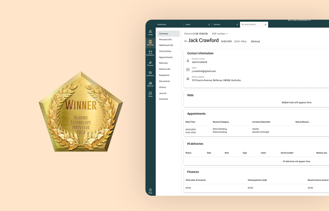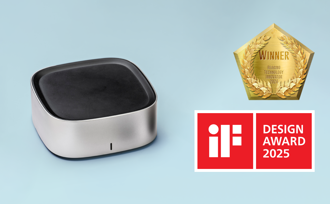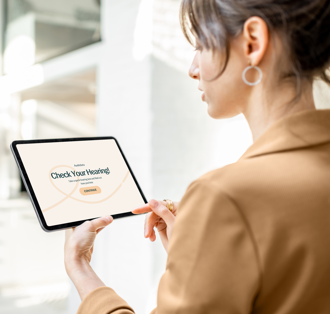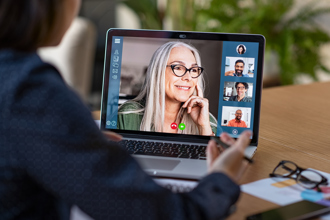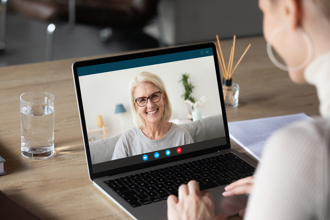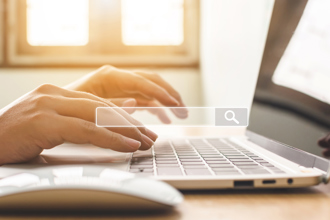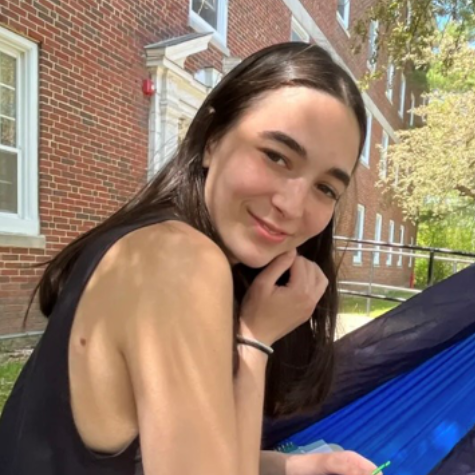One Music-loving Teen’s Hearing Loss Journey & How a Cochlear Implant Changed Her Life
When you first meet 19-year-old Lydia, her cochlear implant isn’t the first thing you notice about her. Her most noticeable traits are that she’s sweet, bubbly, adorable, and obsessed with pop superstar Taylor Swift.
But Lydia has had problems with her ears since she was a baby, resulting in hearing loss.
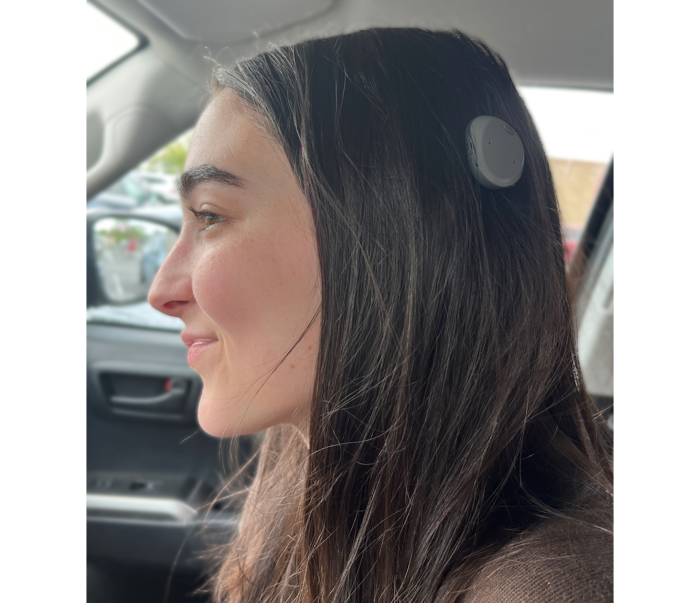
How It All Began
Starting when she was an infant, Lydia had many ear infections. She was at the doctor constantly, and had tubes put in both ears multiple times as a young child.
When she was 18 months old, she woke up one day with a significant amount of mucus coming out of her left ear. Her mother took her to the pediatrician, who found that the mucus had corroded her left eardrum and sent her to an ENT. The ENT confirmed that her eardrum was damaged and that she did, in fact, have hearing loss in her left ear.
When she was in kindergarten – at age five – she had surgery where the ENT tried to rebuild her left eardrum with a “fat patch,” where they took a piece of fat from her neck and used it to fill her eardrum, plus the ENT put in a prosthetic bone. This solution worked well for a while, but then she had a cyst grow in her left ear, which the ENT removed. Her ENT told her family that when a cyst like that grows, there’s a 20% chance it will grow back.
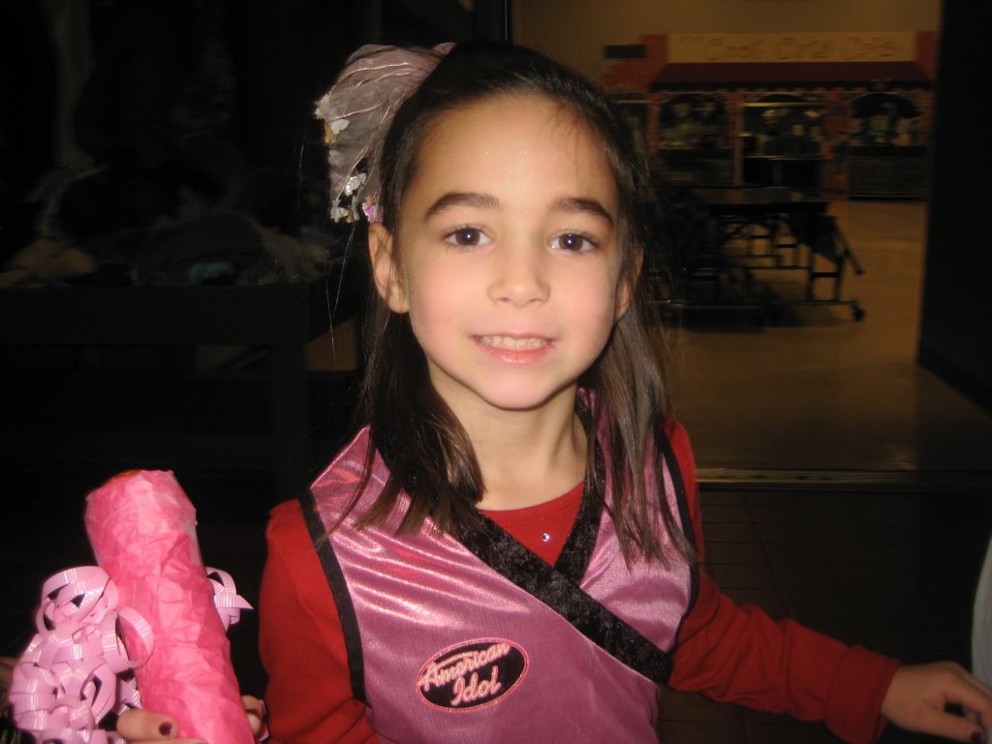
At age 10, the ENT had to replace the prosthetic bone with a larger prosthetic since she had outgrown the first one. He also had to remove another cyst.
While Lydia had hearing loss in her left ear as a child, she adapted well to it at a young age, even without hearing aids.
She attended a small school in a small town in New Hampshire, in the United States, and they happily made accommodations for her. Her teachers let her sit at the front of the classroom so she could hear better. When she asked to sit on the left side of the classroom – since her right ear had better hearing – the teachers moved her seat accordingly.
Lydia got through elementary, middle, and high school this way, sitting in a certain location in each classroom so she could hear the teachers. But, throughout her school years, she faced challenges associated with her hearing loss.
1/3
The Additional Challenges of COVID
The COVID-19 pandemic hit when Lydia was in high school, and this crisis added new challenges for her.
“The pandemic was especially hard for me with people wearing masks. It made it harder for me to hear and impossible for me to read lips,” Lydia remembered.“And we had plexiglass in between the desks in our classrooms, which muffled sounds even more, making it even harder for me to hear. I’d come home from school and take naps every day because I was just so exhausted from the additional effort and stress of it all.”
Compounding these issues, Lydia had another cyst growing in her left ear during the pandemic. She didn’t realize it at the time, but the cyst was damaging her hearing even more.
1/3
A New Audiologist and a New Approach
Lydia went to a new audiologist and a new ENT to treat these new symptoms.
The new ENT tried cleaning out the ear, which had a lot of buildup. Then, she decided to do a CT scan to determine whether there was another issue causing the hearing loss and found the cyst.
The ENT recommended surgery to remove the cyst and to try and build back the eardrum, which had regressed since her previous surgery more than a decade prior. The ENT successfully removed the cyst, but the eardrum repair didn’t go as well. The practitioner took a flap of cartilage to try and build back the eardrum, but the procedure didn’t work because Lydia’s body rejected the flap.
Meanwhile, Lydia was preparing to go to college, and was nervous about how she’d navigate huge lectures and other university-level classes with her hearing loss. While her small town elementary, middle, and high school teachers had been extremely accommodating, she worried that her college professors might not be. She was concerned that she might not get to choose her optimal seating location in large lecture halls, and that she wouldn’t be able to ask her professors to repeat themselves if she didn’t hear something in class.
So, she started thinking seriously about getting hearing aids and working with her new audiologist, who suggested a cochlear implant for her left ear.
In March 2022, when she turned 18, she had surgery to get the implant under her skin. A month later, she got the device, an Osia 2, which just required a simple visit with her audiologist, where the device was activated. This was the first time in Lydia’s life that she was trying a hearing device.
“Once I got the hearing aid, I was so overwhelmed by the noises, I had to take it off,” Lydia said. “I didn’t like it at first. I had to gradually turn it up, and it took me two months to get used to it.”
1/3
She said a few people on her college campus, the University of New Hampshire, have asked her about the device, but it’s been in a curious – not mean – way. She said that no one has made fun of it, as she had initially feared.
“Now, I don’t have to worry about where I sit in my college classes. I can hear well from wherever I sit in the room, which is nice,” Lydia added.
Looking back, Lydia said she didn’t realize how much her hearing loss impacted her life as she was growing up.
1/3
When she had her hearing examination with her new audiologist in high school, her left ear showed a moderately severe hearing loss, and the new practitioner thought she’d be a great candidate for a cochlear implant. Currently, Lydia’s right ear is mostly in the normal range, except for higher frequencies, so she doesn’t have a hearing aid in that ear, but her audiologist predicts she will need one eventually.
Lydia’s Customer Journey
Lydia loves her current audiologist, and thinks the audiology profession is fascinating. In fact, Lydia is studying to become an audiologist herself! She said her current audiologist is enthusiastic and knowledgeable, especially about cochlear implants, which is her specialty.
While it can take a month or two to get an appointment with this new audiologist because she’s so popular and highly specialized in cochlear implants, if Lydia has an emergency, the clinic gets her in right away.
1/3
The staff at her current practice does a good job communicating with her, sending appointment reminders by text, for instance. They also follow up after each surgery to check on her.
Lydia said if she could change one thing about her current audiology practice, it would be to have them follow up with her more after appointments to see how her device is working in the real world. Since she’s had some issues with static and interference, it would be helpful to talk to someone to troubleshoot without having to come back in for an emergency appointment.
Lydia’s concerns were more focused on her former childhood audiologist, who she said was less enthusiastic, and didn’t do anything to make her visits fun or reassuring.
“It was just boring beeps sitting in a dark room with a bland audiologist when I was a child,” Lydia said, adding that the practitioner and staff were never engaging and never tried to make the experience more interesting or entertaining for her.
Now, she understands that audiology clinics have more engaging sounds, like Paw Patrol, to make hearing screenings more fun for kids, which she thinks is a huge improvement over what she experienced in her youth.
Reducing The Stigma of Hearing Aids
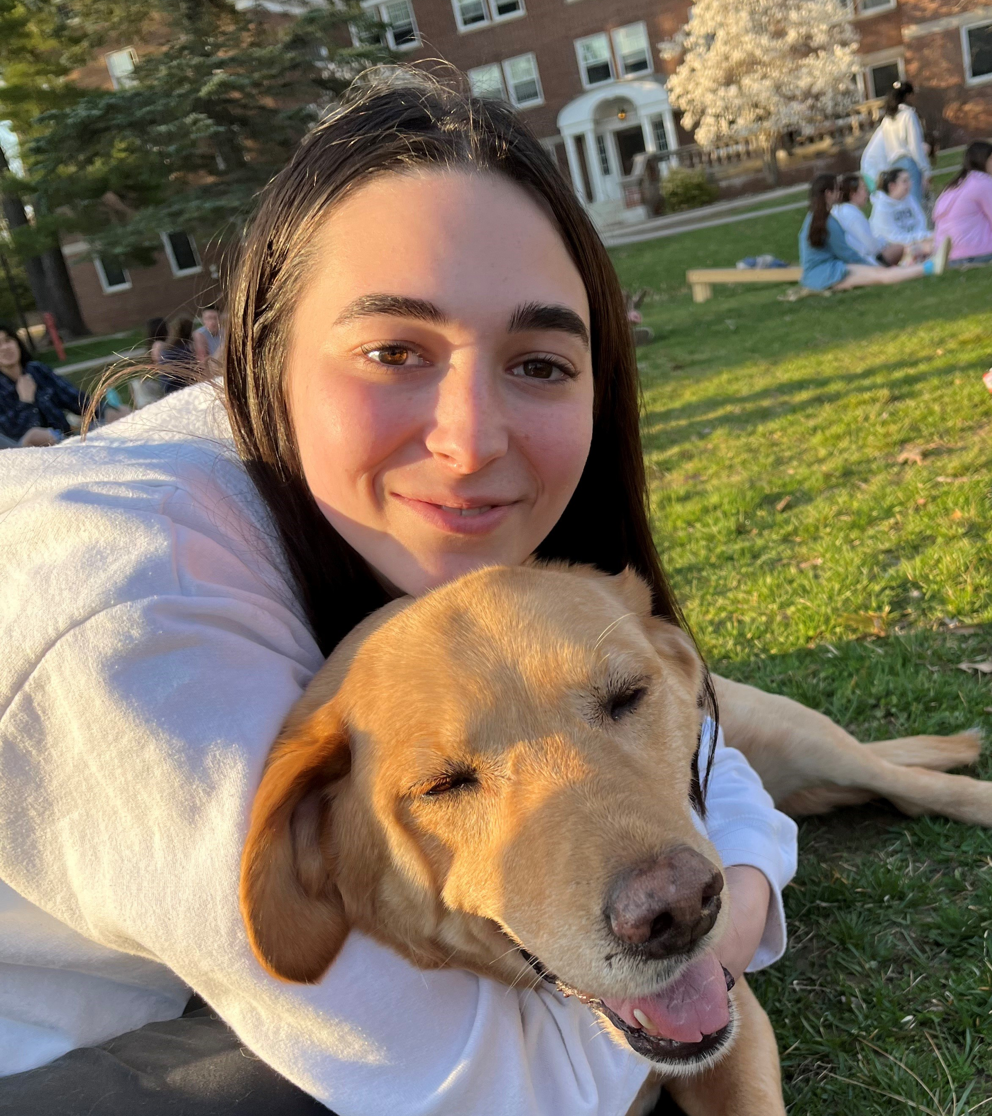
Lydia believes there’s a stigma around needing to wear hearing aids that’s different than needing to wear glasses.
“When people see someone wearing hearing aids, they might assume the person is deaf. They might think they have a learning disability or a speech impediment. This isn’t talked about much in the media, so many people don’t really understand it,” Lydia said. “Vision can be easily fixed with glasses. Hearing – especially with cochlear implants – is more complex, involving surgery.”
Lydia said that it’s possible that the hearing industry contributes to the stigma around hearing aids. For instance, her audiologist emphasized the “small size” of her device, saying that Lydia could hide it behind ear so no one could see it.
“I was happy to hear that, though. As a young woman, I didn’t want it to be seen. I felt the stigma,” she admitted. “They have different color pieces for the cochlear implant that blend in with your hair – black, brown, gray. They don’t offer colors like pink to stand out as an accessory.”
1/3
The Upsides of Her Hearing Device
As a young woman who loves music, she loves having the ability to stream music directly to her cochlear implant.
“I can stream music directly to my device and no one knows I’m doing it,” Lydia said, smiling. “And I can get new devices with upgraded technology. I want one with a microphone so I can talk directly into it when I’m on the phone.”
She also enjoys having different settings on her hearing aid, so she can adjust accordingly if she’s outside, in a noisy restaurant, etc. Her hearing aid is quick and easy to adjust, using a button on her phone’s lock screen or via an app on her phone.
After navigating her hearing health journey for her entire life, she offers solid advice to others who suspect they might have hearing loss:
“Go get a hearing test. Figure it out,” she said. “If you have hearing loss, get a hearing aid. I knew I’d get one eventually, so why put it off. It’s so worth it. I don’t want to worry about missing things anymore. I don’t miss out on lectures. It’s easier to hear in the dining hall. I’m glad I finally got it.”
Lydia's Story Shows the Importance of Personalized Care
Lydia's hearing issues began in infancy, characterized by frequent ear infections and subsequent surgeries to address eardrum and middle ear damage. This underscores the importance of early detection of hearing issues, prompt intervention, and the necessity for ongoing monitoring throughout a patient's development.
Adaptation and Accommodation: Despite her hearing loss, Lydia adapted without hearing aids for much of her life, aided by accommodations at school, such as preferential seating. This highlights the need for audiologists to work closely with educators and parents to implement practical accommodations that can significantly improve the educational experience for children with hearing impairments.
Innovation and Technology Acceptance: The transition to a cochlear implant was challenging for Lydia, requiring time to adjust to new auditory inputs. This emphasizes the importance of patient support and education during the adaptation phase to new devices.
Future Needs and Long-Term Planning: Even though Lydia's current hearing aid addresses her needs, her audiologist anticipates the future requirement for additional aids. This forward-looking approach ensures that long-term hearing health is considered and planned for, demonstrating the importance of ongoing assessment and adaptation of care strategies.
Auditdata Solutions
Raising Awareness, Improving Lives
As a leading provider of audiology solutions, we see it as our responsibility to raise awareness about the consequences of undetected hearing loss, help guide individuals to take the initial steps toward detection and treatment, and advise hearing care professionals on how to provide the best care experience.
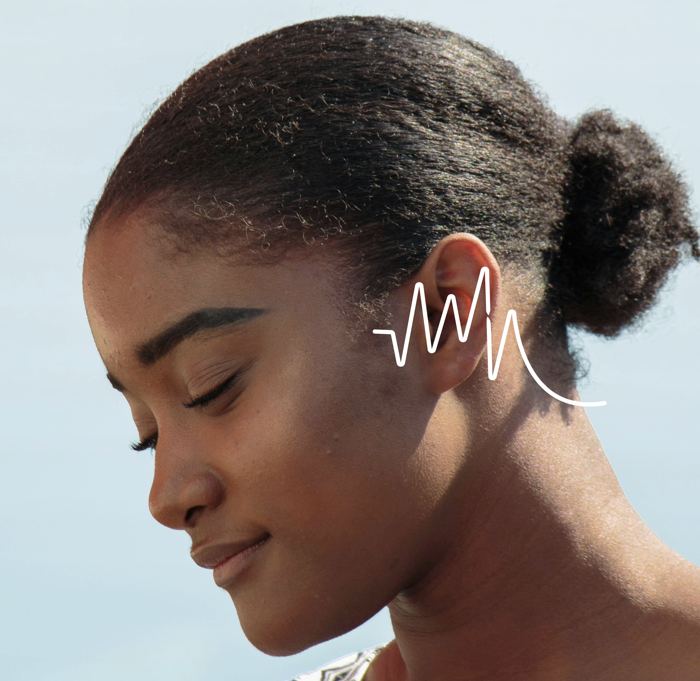
Don't Miss Out On the Latest Insights On Audiology
Sign up today to receive exciting updates, tips, and the latest newsletters from Auditdata.
